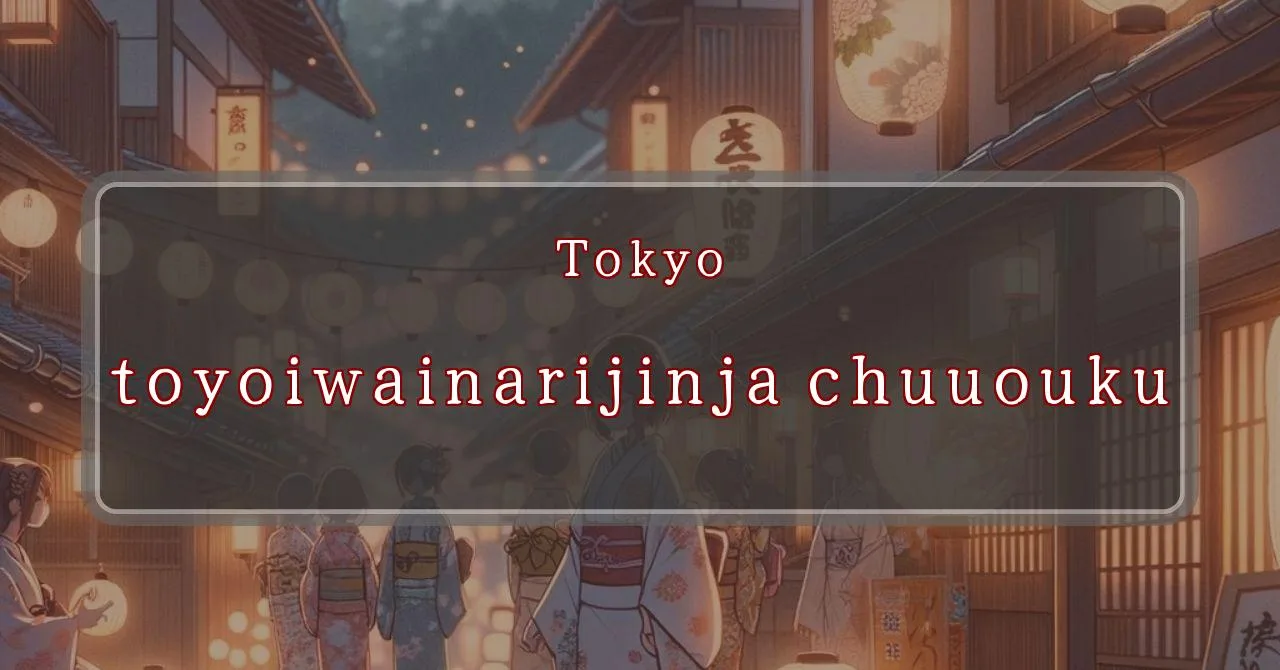Glowing shrine in Ginza, a divine spectacle
Basic Information
Toyoiwa Inari Shrine is a Shinto shrine located in the Ginza district of Chuo City, Tokyo, Japan. It is dedicated to Inari, the Shinto deity of rice and sake, and is known for its association with the geisha and kabuki theater traditions.
- Address: 7-8-14 Ginza, Chuo-ku, Tokyo 104-0061, Japan
- Phone Number: 03-6264-5639
- Access: 5-minute walk from Ginza Station on the Tokyo Metro Ginza, Marunouchi, and Hibiya Lines
- Festival Days: April 15th, 2024 (Reiwa 6)
Main Events and Attractions of the Festival
The Toyoiwa Inari Shrine Festival is a vibrant and colorful celebration that attracts many visitors each year. The main events and attractions of the festival include:
Mikoshi Procession
The highlight of the festival is the mikoshi procession, where a portable shrine is carried through the streets of Ginza by local residents and festival participants. The mikoshi is decorated with colorful tapestries and streamers, and it is believed that carrying it brings good luck and prosperity to the community.
Kagura Dance
Kagura is a traditional Japanese dance performed by shrine maidens. During the Toyoiwa Inari Shrine Festival, kagura is performed as a dedication to the shrine’s deity, Inari. The dance is accompanied by music and chanting, and it is believed to bring good fortune and purification to those who watch it.
Food and Market Stalls
During the festival, the streets around Toyoiwa Inari Shrine are lined with food and market stalls selling a variety of traditional Japanese foods and crafts. Visitors can enjoy a variety of delicious treats, such as yakitori, taiyaki, and dango, as well as shop for souvenirs and other goods.
Geisha and Kabuki Performances
As Toyoiwa Inari Shrine is associated with the geisha and kabuki theater traditions, it is common to see geisha and kabuki actors performing during the festival. These performances are a highlight for many visitors, and they offer a glimpse into the rich cultural heritage of Japan.
Blessings and Deities
Toyoiwa Inari Shrine is dedicated to Inari, the Shinto deity of rice and sake. Inari is also known as the god of fertility, prosperity, and worldly success. The shrine is a popular destination for people who are seeking blessings for their businesses, careers, and personal lives.
- Deity: Inari, the Shinto deity of rice and sake
- Blessings: Fertility, prosperity, worldly success, business success, career success, personal success
Origin and History
The origins of Toyoiwa Inari Shrine are unclear, but it is believed to have been founded during the Edo period (1603-1868). The shrine was originally located in a different part of Ginza, but it was moved to its current location in 1933. The shrine was destroyed by fire in 1945 during World War II, but it was rebuilt in 1950.
- Founded: Edo period (1603-1868)
- Original location: Different part of Ginza
- Moved to current location: 1933
- Destroyed by fire: 1945
- Rebuilt: 1950
Tips and Notes for Visitors
Here are some tips and notes for visitors to Toyoiwa Inari Shrine:
- Hours: The shrine is open 24 hours a day, but the main office is only open from 9:00 AM to 5:00 PM on weekdays.
- Admission: Admission to the shrine is free.
- Dress code: There is no specific dress code for visiting the shrine, but it is considered respectful to dress modestly.
- Photography: Photography is allowed inside the shrine, but it is prohibited to take pictures of the honden (main shrine building).
- Offerings: Visitors can make offerings to Inari by purchasing ema (wooden plaques) or omikuji (fortune papers) at the shrine office.
Parking Information
There is no parking lot at Toyoiwa Inari Shrine, but there are several public parking lots nearby.
- Ginza Mitsukoshi Parking Lot: 5-minute walk from the shrine
- Ginza Park Parking Lot: 7-minute walk from the shrine
- Ginza Place Parking Lot: 10-minute walk from the shrine
Popular Stalls and Food Carts in Recent Years
| Type of Stall | Description |
|---|---|
| Takoyaki | A staple at Japanese festivals. Characterized by a crispy outside and a creamy inside. |
| Jaga Butter | A simple yet popular snack of hot potatoes lavishly topped with melted butter. |
| Baby Castella | Small castella cakes, sweet and fluffy treats enjoyed by children and adults alike. |
| Grilled Ayu with Salt | Fresh ayu fish grilled whole with salt, a savory taste of Japanese summer. |
| Shaapin | A unique gourmet item influenced by foreign cuisine, with a chewy skin wrapping the filling. |
| Okonomiyaki | A Japanese grilled dish where you often choose your own ingredients for a personalized flavor. |
| Cotton Candy | A fluffy, sweet snack that’s extremely popular with children. |
| Chocolate Banana | A banana coated in chocolate, a fun and visually appealing dessert. |
| Kushiyaki | Various types of ingredients skewered and grilled, an easy-to-enjoy snack. |
| Yakisoba | Fried noodles mixed with a special sauce, a fast food favorite in Japan. |



